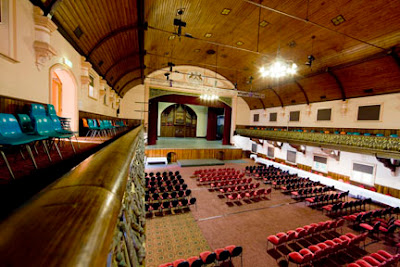Entally House is one of the finest historic homes in Tasmania. The house was built in 1819 by Thomas Haydock Reibey II, the eldest son of Thomas and Mary Reibey. Mary, who is pictured on Australia's $20 note, was a former convict who, at the age of 13 was convicted of horse stealing and sentenced to transportation. She later became one of Australia's wealthiest women and obtained the grant of 300 acres of land upon which Thomas was to settle and build the homestead and outbuildings.
The Entally Historic Site consists of Entally House and various outbuildings, including Australia's oldest Conservatory. The Estate encompasses grand, parklike surroundings with magnificent gardens and a vineyard, Regency furnishings, fine silverware and horse-drawn coaches and agricultural implements.
Thomas II was the first son of Thomas and Mary Reibey. He was a Master in his parents shipping business and established the family business in Launceston with their own wharf and warehouses in the early 1800’s. His father Thomas Reibey had been a junior officer in the East India Company where he had spent time in a suburb of Calcutta called Entally. His mother Mary Reibey (nee Molly Haydock) had arrived in Sydney Town in 1792. That year, at the age of 13 and disguised as a boy, Mary was convicted of horse stealing and sentenced to transportation to New South Wales for seven years.



From these humble beginnings the pair married and developed a busy farming, trading and shipping business along the Hawkesbury River moving into Sydney Town to expand. Following the death of Mary’s husband in 1811, she continued the family business becoming well established in Sydney. In 1817 Mary Reibey helped found the first Bank in Australia known then as the Bank of New South Wales and today her image appears on the current $20 note.
There is a street in Sydney behind Circular Quay named after the family and their first family home in Sydney was built on George Street this building later became the site for the first Bank of New South Wales. A memorial Plaque to Mary can be found in Argyle Street, The Rocks, giving details of her life.
Entally was with a 300 acre land grant, which came with provisions from the Government stores and convict labour. The estate grew cereal crops and raised Devon cattle. In 1828 Thomas II was a founding director of the first bank in Launceston – The Cornwall Bank. He married Richarda Allen in 1817 and four children were born to them. Thomas II died at the estate in 1842 and the property passed to his eldest son Thomas Haydock Reibey III, who had been studying at Oxford University in England prior to his father’s death.
In 1843 with assistance from the State, Thomas III had a bridge built over the South Esk River and charged a toll for its use to repay the debt. Thomas III became the first native Tasmanian ordained to Holy Orders in 1844 and appointed to Archdeacon in 1858. On a return trip to England in 1853 he received an honorary M.A form the Archbishop of Canterbury.
In 1860 the estate consisted of a chapel, conservatory, stables, stone barn, coach house, coachman’s lodge, and gatehouse and to the north of the estate a cricket ground that’s believed to be one of the first in the country; hosting games before Melbourne was settled..
In 1868 Thomas III was subject to scandal when he was accused of “diverting a lady’s affection” he resigned from the church. A court case followed shortly after, in which he sued Mr. Blomfield for libel. Scandals were common during this period so Thomas III after, a period as a recluse, stepped back into the public domain by running for a seat in parliament. He was elected to the House of Assembly in 1872 and for 30 years he served the people during this time became Colonial Secretary, Speaker of the House and eventually Premier of Tasmania from 1876 to 1877.
His love of horseracing saw him become president of three local racing clubs Carrick, Rosedale and Newham with around 90 thoroughbreds at his Entally estate. One of those horses Bagot, purchased from Calstock, Deloraine won the 1600m Yan Yean Stakes at a Melbourne Cup meet in 1882. Sold by Thomas later that year Bagot was renamed Malua winning the Melbourne cup in 1884.
Thomas III passed away in 1912 and with no heir to the estate the property passed to Thomas Reibey Arthur the son of his sister Mary. In 1947, the Tasmanian Government purchased the estate through the Scenic Preservation Board and opened the site to the public in 1950. The house today is presented as a colonial gentleman’s residence.
The National Trust leased and managed the state from 1987 until 2005, when Gunns Limited took over the lease and a 3 ha, vineyard was added. Gunns Limited maintained management of the property until January 2010 when the Estate was passed back to the Parks and Wildlife service.
The property remained under the management of the Parks and Wildlife Service until October 2015 when it was again leased to a private consortium to be managed in conjunction with the neighbouring Entally Lodge property.
Main Text & Information Sources –























































